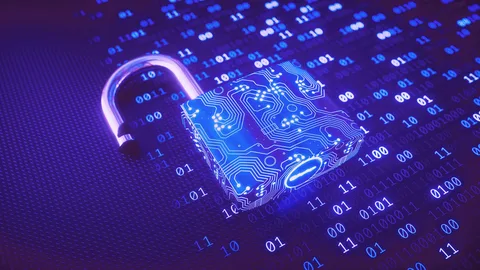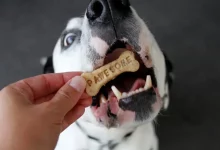The Future of Quantum Cryptography in Online Security

I. Introduction
As the digital landscape evolves, the rise of quantum computing poses both opportunities and challenges for online security. This article explores the future of quantum cryptography as a groundbreaking solution to fortify digital communication and protect sensitive information from the unprecedented computational power of quantum computers.
II. Understanding the Threat: Quantum Computing
Quantum computers, with their unparalleled processing capabilities, threaten the existing cryptographic methods that underpin online security. This section provides an overview of the quantum computing threat and its potential to render conventional encryption algorithms vulnerable to rapid decryption.
III. The Promise of Quantum Cryptography
Quantum cryptography emerges as the antidote to quantum computing threats. This section delves into the principles of quantum cryptography, leveraging the laws of quantum mechanics to establish secure communication channels. Quantum key distribution (QKD) becomes a beacon of hope for unbreakable encryption in the quantum era.
IV. Quantum Key Distribution (QKD) Explained
QKD represents a revolutionary approach to secure communication. This section explains how QKD employs quantum properties like superposition and entanglement to create a secure key exchange between parties. The inherent principles of quantum mechanics ensure the detection of any eavesdropping attempts, guaranteeing the confidentiality of communication.
V. Unbreakable Encryption with Quantum Entanglement
Quantum entanglement, a phenomenon where particles become interconnected regardless of distance, forms the bedrock of unbreakable encryption. This section explores how entangled particles enable the creation of cryptographic keys immune to traditional decryption methods. The reliance on quantum entanglement elevates the security of communication to unprecedented levels.
VI. Overcoming Quantum Computing’s Threat to RSA and ECC
Traditional cryptographic algorithms like RSA and elliptic curve cryptography (ECC) face jeopardy from quantum computing. This section discusses how quantum-resistant algorithms, such as those based on lattice cryptography or hash-based cryptography, are being explored to thwart the cryptographic vulnerabilities posed by quantum computers.
VII. The Practical Implementation of Quantum Cryptography
Making quantum cryptography a practical reality is a multifaceted challenge. This section explores the ongoing efforts to implement quantum key distribution in real-world scenarios, the development of quantum-resistant algorithms, and the integration of quantum-safe practices into existing security infrastructures.
VIII. Quantum Cryptography in Quantum Internet
The advent of quantum internet amplifies the role of quantum cryptography. This section envisions how quantum key distribution becomes a cornerstone of secure communication in a quantum internet environment. Quantum entanglement facilitates the creation of a quantum internet where information transfer is fundamentally secure.
IX. Industry Adoption and Quantum-Safe Standards
The transition to quantum-resistant cryptographic methods requires industry-wide collaboration. This section discusses the importance of standardizing quantum-safe cryptographic protocols and the gradual adoption of quantum-resistant algorithms across digital platforms to future-proof online security.
X. Addressing Quantum Cryptography Challenges
While quantum cryptography holds immense promise, challenges exist. This section addresses issues such as scalability, cost, and the need for quantum repeaters to extend the reach of quantum communication. Overcoming these challenges is crucial for the widespread implementation of quantum cryptography.
Conclusion
In conclusion, the future of quantum cryptography emerges as the linchpin in securing digital communication against the impending threat of quantum computing. From the principles of quantum key distribution to the practical implementation of quantum-safe standards, the journey towards quantum security represents a collaborative effort to fortify the digital frontier against unprecedented challenges.
FAQs
- How does quantum cryptography address the threat of quantum computing? Quantum cryptography leverages the principles of quantum mechanics to establish secure communication channels, specifically through quantum key distribution (QKD). It provides a solution to the potential vulnerabilities of traditional encryption algorithms in the face of quantum computing.
- What is Quantum Key Distribution (QKD) and how does it work? Quantum Key Distribution is a method that uses quantum properties like superposition and entanglement to create a secure key exchange between parties. It ensures the confidentiality of communication by detecting any eavesdropping attempts, making the keys exchanged resistant to traditional decryption methods.
- How does quantum entanglement contribute to unbreakable encryption in quantum cryptography? Quantum entanglement allows particles to become interconnected regardless of distance. In quantum cryptography, entangled particles enable the creation of cryptographic keys that are immune to traditional decryption methods, contributing to the concept of unbreakable encryption.
- What quantum-resistant cryptographic methods are being explored? Quantum-resistant cryptographic methods include approaches based on lattice cryptography or hash-based cryptography. These methods aim to overcome the cryptographic vulnerabilities posed by quantum computers to traditional algorithms like RSA and elliptic curve cryptography (ECC).
- What challenges exist in the practical implementation of quantum cryptography? Challenges in the practical implementation of quantum cryptography include issues of scalability, cost, and the need for quantum repeaters to extend the reach of quantum communication. Overcoming these challenges is crucial for the widespread adoption of quantum-resistant cryptographic methods.









